What to do in June
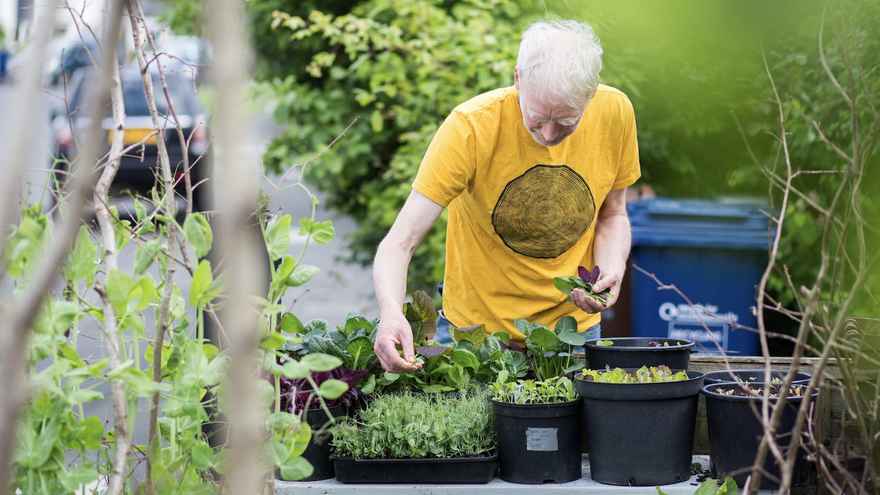
Long, light, and (hopefully) warmer days means everything can grow at its fastest this month. Go away for the weekend and your tomatoes and beans might be an inch or two taller on your return.
It'a also a busy gardening month: watering, feeding and tying up plants as they grow.
And if you want to keep up a supply of salads, leaves, peas, and beans for late summer and autumn, you'll want to sow some seeds, too. Dedicating a small space or shelf as a 'seedling nursery' is a great way to raise baby plants that you can plant out when needed.
This month
- What to sow now
- Other jobs for June: feeding, pinching out, harvesting.
1. What to sow now
There's a lot you can sow in June - and if you want to avoid gaps in pots later in the season (as crops finish), you can plan ahead and sow some in trays or small pots over the next few weeks.
i) Courgettes / zucchini and cucumber
I usually sow another courgette / zucchini or two this month - as earlier sowings tend to run out of steam in mid to late August in containers. This way, we can eat fresh courgettes well into September. I sow the seeds in small pots. I then move them into the larger containers that are now growing peas and early potatoes when I harvest these in early July.
ii) Herbs
June is a good month to buy and plant most herbs. And is one of the best months to sow basil: it will enjoy the warm weather that is (hopefully) to come.
Coriander is prone to flower prematurely at this time of year. For a continuous supply through summer, sow a new tray every few weeks. Or wait until late August, when sowings will often keep going all winter and into spring the following year.
Most herbs will have lots of fresh, soft growth at this time of year. This makes it a good time to start new herbs from cuttings. Good ones to try: lemon verbena, thyme, rosemary, sage and Vietnamese coriander.
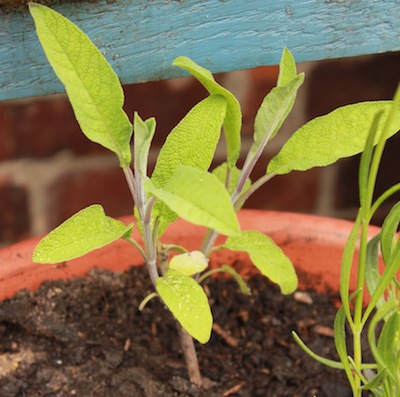 Sage grown from a cutting. Cuttings from most herbs are not difficult and a great way of expanding your herb collection for free!
Sage grown from a cutting. Cuttings from most herbs are not difficult and a great way of expanding your herb collection for free!
iii) Peas and beans
Most types of peas and beans can still be sown now to give you a fresh supply in the late summer and autumn. French and runner beans are a rewarding and productive choices for containers.
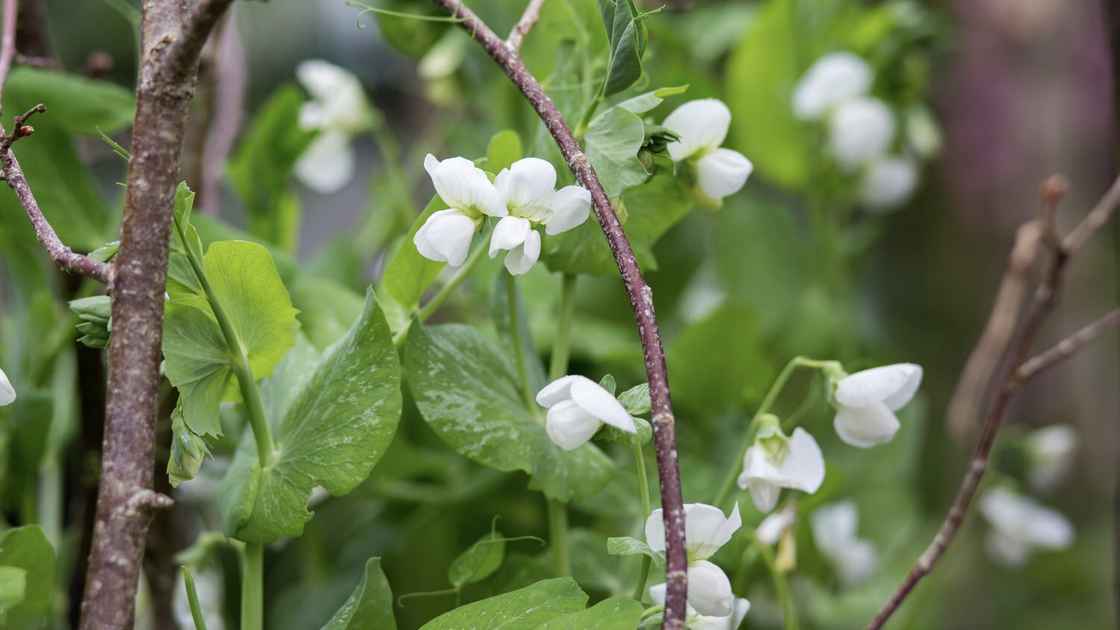 I love the pea blossom that appears in June from earlier sowings. You can often pick the first peas this month, too.
I love the pea blossom that appears in June from earlier sowings. You can often pick the first peas this month, too.
iv) Salads
Many salad crops - like rocket and lettuce - grow best in the cooler weather of spring and autumn. They can still be grown in summer, but they are more prone to bolt (flower and go to seed) in warm weather. To keep up a regular supply, you'll need to sow them more often. Sow a tray once a fortnight or once a month and you'll have a supply of seedlings you can use to fill gaps after harvesting a pot.
Some salads are less prone to bolt in the heat - and these a good choice to grow for more unusual summer salads. These include: New Zealand spinach, summer purslane, amaranth (callaloo), Malabar spinach (a climber), orach and nasturtiums. Kale and chard also grow well in hot weather - and make a nice addition to salads if picked small.
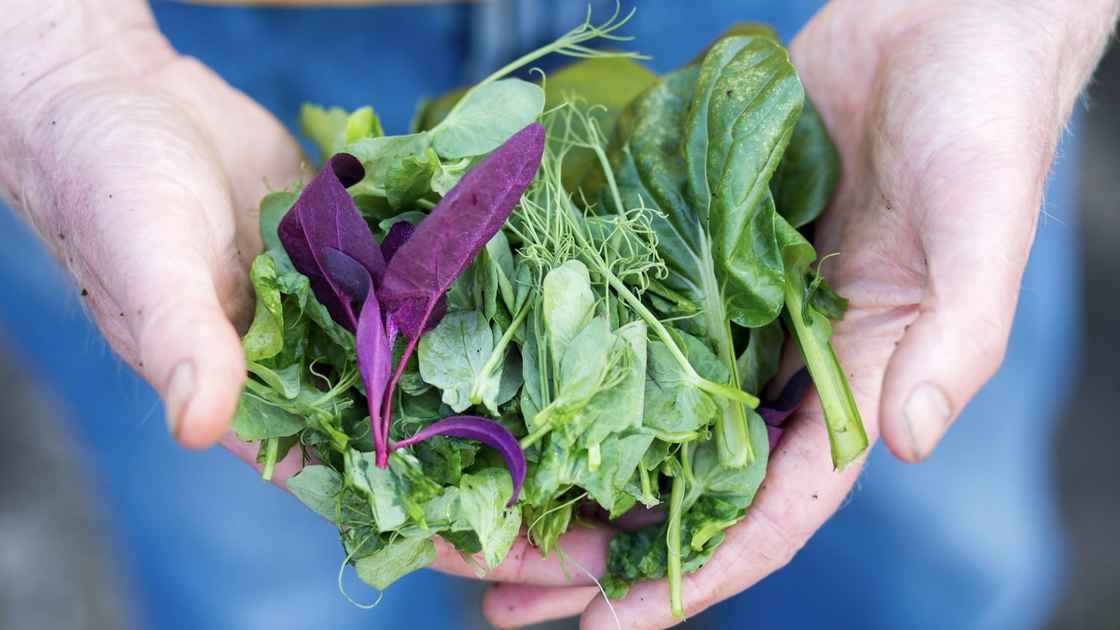 An early June salad harvest. Late spring, early summer is 'peak salad' growing season in much of the UK.
An early June salad harvest. Late spring, early summer is 'peak salad' growing season in much of the UK.
v) Oriental greens
Mustards, pak choi and other oriental greens are more prone to bolt (flower and go to seed prematurely) in lengthening days and in hot weather. It's best to sow them after the midsummer solstice (21 June). Or, for an even longer lasting crop, wait until late August / early September.

Mustards like this Tatsoi and mustard red giant grow best in the cool of spring and early autumn. Here are some I'm harvesting in early June. They can be sown again after the summer solstice but I often hold back until later August when they grow really well again.
vi) Carrots, spring onions, beetroot, turnips, radishes
Can all be sown this month. Radishes are a useful 'catch crop' (a fast growing crop to fill a space in an empty pot for a few weeks), maturing in just three or four weeks. Spring onions / scallions grow well between salads and other leafy veg - or can be very productive when sown close like this. They take up little space and the onion smell can help deter pests. They can also be picked over many weeks without becoming tough or bitter (like some root veg).
Beetroot and carrots are slower to grow and I don't find we get a lot to eat from a containers. As they are also widely available in the shops, I prefer to use limited space for crops that will give us more to eat. That said, many people grow carrots in containers simply for the taste of home grown - which can be far superior to any you buy.
2. Other jobs
i) Move tender plants to final pots
Once all risk of frost is passed in your area, tender plants (those that are killed by frost) like tomatoes, chillies and aubergines can all be moved outside to their final pots outside.
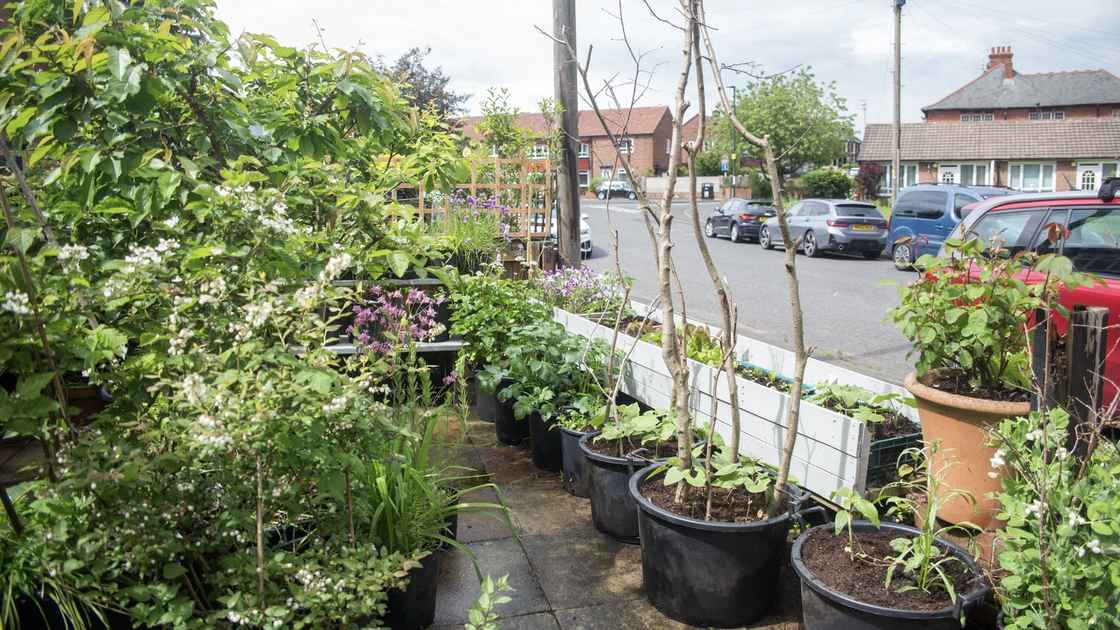
Tender plants like French and Runner beans, squash and tomatoes can all be moved into their final pots once the threat of frost is past.
It's good practice to 'harden off' plants before moving them outside (for an explanation of 'hardening off' see April). It isn't always essential.... However, if you do move plants that aren't hardened off, try to do during so on warmer days that are not too windy. This will help to minimise the stress they experience.
ii) Pinching out and tying up
Keep pinching out the side shoots of vine tomatoes to keep them in order. (Vine tomatoes are vigorous growers, and will quickly grow into an unwieldy bushy if the side shoots are not removed). Keeping checking that all climbing plants - like peas and beans - are securely tied in, particularly if strong winds are forecast.
iii) Feed fruiting crops
When growing fruiting crops like tomatoes and courgettes / zucchini in containers, they will usually yield better if fed regularly. A liquid tomato feed is ideal for all fruiting crops - not just tomatoes. The conventional time to start feeding is when the flowers appear - follow the instructions on the side of the bottle.
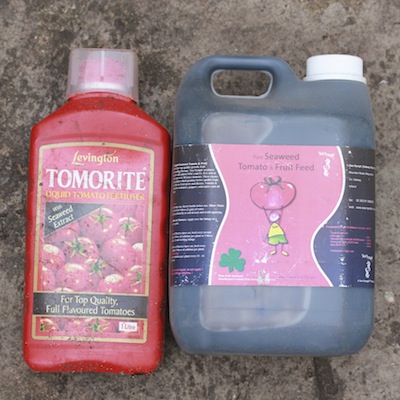 Using liquid tomato feed on all fruiting crops will usually improve yields, often significantly. Keep picking!
Using liquid tomato feed on all fruiting crops will usually improve yields, often significantly. Keep picking!

33 comments
Leave a comment